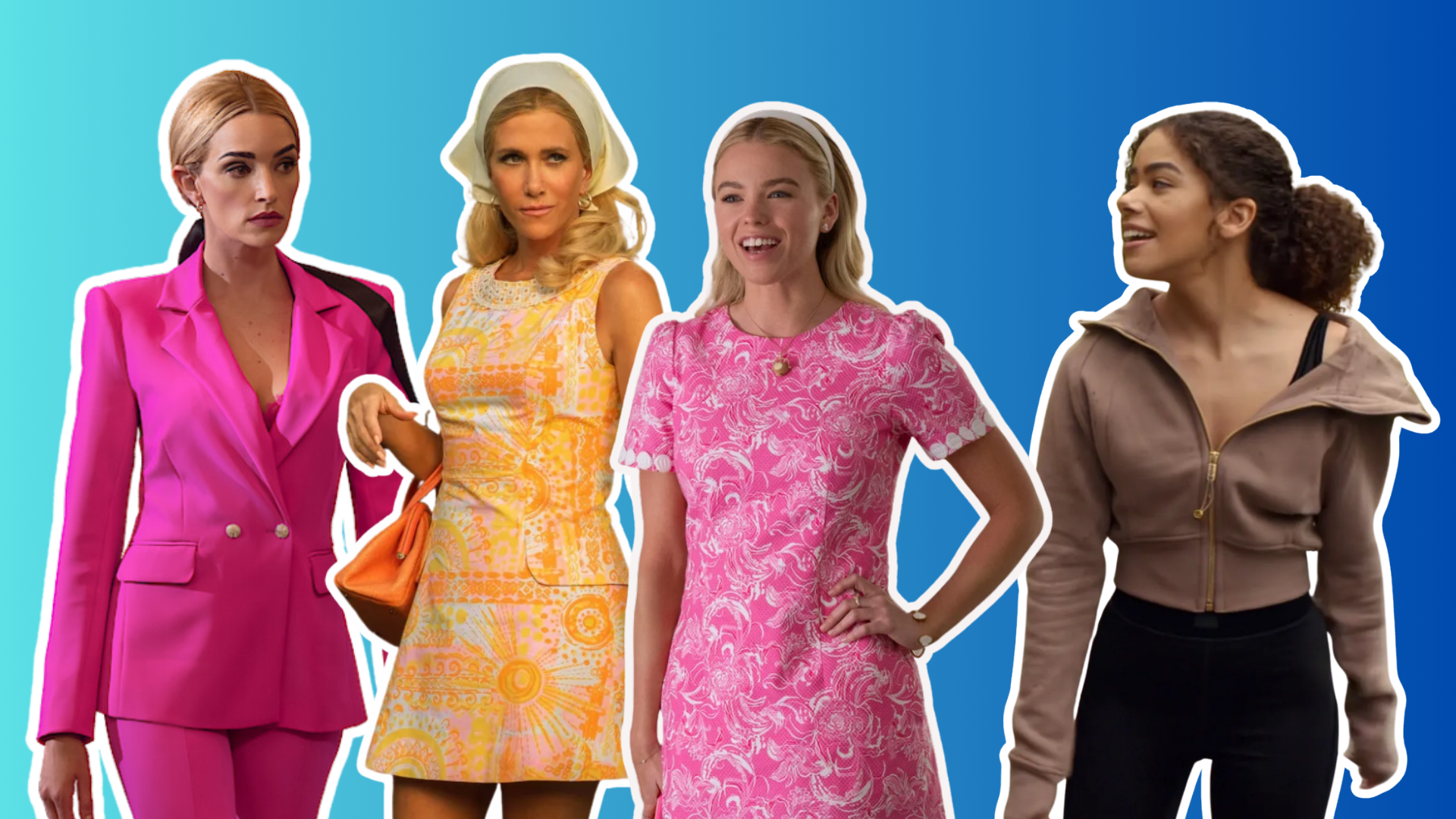The Power of Product Placement: What Ginny and Georgia, Sirens, and Orbit Baby Can Teach Us About Brand Buzz
By Carolyn Delacorte
Reading time: 6 min
1. Why Product Placement Works
2. Ginny & Georgia: The Lululemon Effect
3. Sirens: Satire, Lilly Pulitzer, and a Surprising Redemption
4. Palm Royale: Vintage Lilly Pulitzer’s Fashion Moment
5. Orbit Baby: A Boxwood Co Case Study
6. CV Skinlabs: Behind‑the‑Scenes Beauty That Steals the Spotlight
7. Takeaways for Brand Founders
Why Product Placement Works
In a world of ad fatigue and algorithm burnout, product placement remains one of the few ways to get your product directly into the emotional bloodstream of pop culture. Whether it’s a subtle moment of wardrobe magic or a full-blown storyline, when audiences see a product in use—and feel the story around it—it sticks.
Let’s explore some of the most buzzworthy recent examples (and yes, one just might involve a stroller turf war with Dwight Schrute).
Ginny & Georgia: The Lululemon Effect
The Netflix hit Ginny & Georgia isn’t just known for its mother-daughter drama. It’s become a fashion moment in its own right.
Costume designer Shelley Mansell curated a wardrobe that resonated deeply with the show’s Gen Z and millennial fan base. So much so that one specific piece—a cropped Lululemon Scuba Cropped Sweatshirt—became a top Google search and sold out within hours of the episode airing. Viewers didn’t just want to watch the show; they wanted to wear it.
Wardrobe choice is not an element that Netflix has downplayed. Instead the streaming service has made great use of this element through blog posts, media outreach, and snackable imagery.
It’s a perfect example of organic placement meeting viral demand. No ad budget. Just smart styling, cultural timing, and a costume designer who gets it.
Sirens: Satire, Lilly Pulitzer, and a Surprising Redemption
Then there’s Sirens, a dark comedy that took a more tongue-in-cheek approach.
Costume designer Caroline Duncan decked the characters out in Lilly Pulitzer, but not in a flattering light. The vibrant, prep-school aesthetic took on an eerie tone, making it feel more Stepford than sunshine. That sharp style decision gave the show a cult-ish, almost dystopian aesthetic—and sent people Googling, “Wait, is that Lilly?!” But even with the odd spin, interest and love for all things have Lilly surged.
But the real kicker came when Meghann Fahey’s character Devon roasted Edible Arrangements, calling the brand “hot garbage.” Savage, right?
Instead of retreating, CEO Tariq Farid pounced. He teamed up with the Sirens star to create her own arrangement, flipping the diss into a buzz-worthy redemption arc. He then incorporated pop culture references into the description of the particular arrangement featured, aka The Delicious Party - making it feel like the brand was in on the joke. It was a textbook case of "bad press is still press"- and how smart brand response can steal the spotlight.
Palm Royale: Vintage Lilly Pulitzer’s Fashion Moment
The Apple TV+ series Palm Royale took the Lilly Pulitzer resurgence to glamorous new heights when the show aired in Spring of 2024. Costume designer Alix Friedberg filled Kristen Wiig’s world with actual vintage ‘60s Lilly Pulitzer pieces—crochet-trimmed shift dresses and candy-colored prints that defined Palm Beach style in 1969.
These vibrant vintage looks were more than stylistic flair, they sparked renewed interest in second-hand Lilly pieces and fueled search and shopping trends for the brand . The show proved that slow magic placements, where real archival fashion “makes the scene” can be just as powerful as modern product tie-ins.
Orbit Baby: A Boxwood Co Case Study
Here’s where I roll up my sleeves and share a little Hollywood backlot magic from my own experience at Boxwood Co.
When Tori Spelling and Dean McDermott signed their reality deal with Oxygen, we worked directly with Tori to make sure she had everything she needed to cart little Liam around on camera. Enter Orbit Baby, the stylish, high-design stroller that quickly became a staple on the show. Over several seasons, it turned into a silent co-star.
But the big TV break? That came with NBC’s The Office. The show’s writers were so intrigued by Orbit Baby’s luxury vibe, they wrote it directly into the script. Yes, really. (Season 5, Episode 4 - Baby Shower)
In one unforgettable episode, Rainn Wilson’s character, Dwight Schrute, becomes so obsessed with the stroller's status symbol glow that he spends the whole episode trying to destroy it. Spoiler: he fails. We had to supply multiple “stunt Orbits” to the production team for the scene - because, you know, when Dwight goes off the rails, props better be ready.
Orbit Baby also showed up on The L Word, with characters giving it glowing (and hilariously detailed) on-screen praise during a baby shower scene. That kind of integrated, character-driven exposure? Priceless.
Other placements included Walt Disney Pictures' Cats & Dogs, Paramount’s Yours, Mine and Ours, and Hellboy II—each adding new layers of visibility and pop culture cachet to the brand.
And the results? Let’s just say Orbit Baby went from stylish newcomer to cult favorite real fast.
CV Skinlabs: Behind-the-Scenes Beauty That Steals the Spotlight
Not all product placements are flashy or obvious. Sometimes, the magic happens behind the scenes—literally.
CV Skinlabs, a clean skincare brand designed to soothe and protect sensitive or compromised skin, has quietly become a go-to favorite among Hollywood makeup departments—especially on productions that involve prosthetics, special effects, or heavy makeup use.
Makeup artist Heba Thorisdottir used CV Skinlabs products to prep and restore Margot Robbie’s skin for her role as Harley Quinn, and again on the upcoming Paul Thomas Anderson film, One Battle After Another. Heba also turned to CV Skinlabs for Paul Rudd while filming Death of a Unicorn.
Other top makeup and special effects pros followed suit:
Howard Berger used the products on American Primeval
Jason Collins applied them to the cast of She Rides Shotgun, including Odessa A’zion
These aren’t just casual endorsements. They’re industry validations—trusted pros choosing performance-driven skincare to protect the faces of Hollywood's biggest stars under the toughest conditions.
And while these moments might not make it into the script or onto the screen, they still tell a powerful story. At Boxwood Co, we’ve helped spin these placements into entertainment press wins, behind-the-scenes features, and scroll-stopping social content that proves the brand’s value without a single line of dialogue.
Takeaways for Brand Founders
Whether you're a startup, a cult brand, or just hoping for your moment in the limelight, here’s what you should remember:
1. Be findable. The Lulu hoodie sold out because people knew where to look. Prep your product pages, SEO, and social ahead of time.
2. Style matters. Partnering with costume designers (not just stylists) can be gold. They’re building characters—and cultural influence.
3. Turn lemons into limelight. Even if a product gets slammed (which rarely happens), clever brand response (à la Edible Arrangements) can flip the narrative.
4. Make friends in film. TV and film placements aren't random. They’re often the result of savvy outreach, fast follow-up, and a little bit of hustle—something we’ve mastered at Boxwood.
5. Tell the story afterward. Product placement is the spark, but PR is the flame. If you don’t share it, nobody will know.







